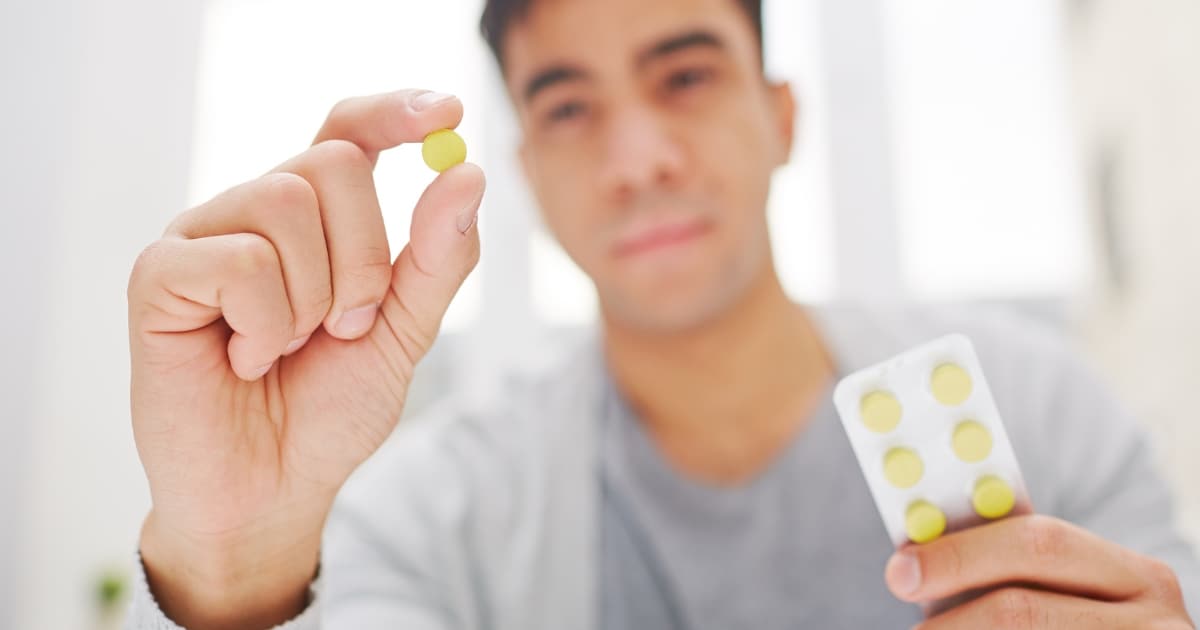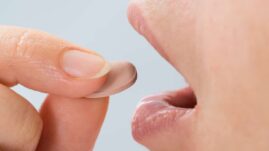Metformin is a popular prescription drug that is used as a first-line treatment for type 2 diabetes. It’s also an active ingredient in many two- and three-ingredient combination drugs for diabetes.
Combination drugs for people with type 2 diabetes often pair metformin with another drug that has a different action in the body, thereby allowing for several methods of lowering blood glucose levels.
This article will investigate the use of metformin combination drugs for type 2 diabetes and will answer some common questions you might have about combination drugs.

Table of Contents
- What are combination drugs?
- What is the best combination with metformin?
- Which antidiabetic drugs can be taken in combination with metformin?
- What are the main benefits of metformin combination drugs?
- What’s next if metformin isn’t enough to manage type 2 diabetes?
- Frequently asked questions
- Final thoughts
What are combination drugs?
Combination drugs, which blend two medications into a single pill, are more complex than two separate pills, each with one medication.
These drugs combine at least two different active ingredients into one prescription, with each medicine in a specific, predetermined ratio. Each of the two (or more) drugs has a unique mechanism of action, meaning it has its own set of effects on the body.
Combination drugs may be approved for several reasons, including that there may be a synergistic effect — meaning that the effect of the two drugs when combined is better than it would be if the two drugs were taken separately.
Combination drugs can also simplify medication management by reducing the number of pills a person needs to take, making it easier to keep track of their regimen.
Combination drugs, officially known by the U.S. Food and Drug Administration (FDA) as “fixed-dose combination drugs” (or FDCs), first began coming to market in significant numbers in the 1980s in the United States and truly accelerated in popularity through the mid-1990s.
What is the best combination with metformin?
Just by itself, metformin comes in many brands and is taken daily as an oral pill, generally once or twice each day.
Metformin helps to manage blood sugar levels by decreasing the amount of glucose the liver produces, lowering the amount of glucose absorbed from the gastrointestinal tract, and reducing insulin resistance (a condition in which the body does not use insulin efficiently). It can even help with weight loss.
Learn more in: Metformin and Weight Loss: Can a Pill Help You Lose Weight?
However, metformin is not always effective enough on its own. In these cases, a healthcare provider may recommend adding a second medication to the treatment regimen.
This is often in the form of a fixed-dose combination drug (a single pill containing two or more medications at specific doses).
Doctors consider many factors when determining which metformin combination drug will best help a person manage their type 2 diabetes. It may be necessary to try more than one combination drug before finding the one that best meets your blood sugar and other health goals while minimizing side effects.
Medicines that combine metformin with SGLT-2 inhibitors (a class of type 2 diabetes drugs first approved in 2013) are both commonly prescribed and are backed by solid evidence.
These combination drugs, which include pairings with empagliflozin (brand names Synjardy and Synjardy XR), dapagliflozin (Xigduo XR), and ertugliflozin (Segluromet), work by helping the kidneys to excrete more glucose through the urine, which reduces overall blood glucose levels.
Metformin and SGLT2 combination drugs have been shown to produce a larger HbA1c reduction than just metformin alone, and research in people with diabetes has also indicated some of the medicines in this class of combination drugs reduce the risk of heart attack and other serious heart conditions when compared to taking metformin by itself.
Other less-common combination drugs that have been shown to be highly effective in decreasing HbA1c levels are “triple combination therapies” that include metformin plus a DPP-4 inhibitor and a sulfonylurea (two additional classes of type 2 diabetes medication).
Small-scale trials with this triple combination drug yielded significant HbA1c improvements. Subsequent triple-combination trials using other active ingredients have shown broader effectiveness for larger groups of people with type 2 diabetes.
In large-scale trials, triple combination drugs such as Trijardy (which combines empagliflozin, linagliptin, and metformin) have been shown to improve HbA1c levels by more than 1.1% compared to taking metformin alone.
It is important to note that while triple combination drugs (or any other kind of combination drug) can be an effective way to help manage blood sugar levels, they aren’t right for everyone.
A doctor or other medical provider will evaluate if these drugs are appropriate for you and if the benefits outweigh any of the potential side effects.
Which antidiabetic drugs can be taken in combination with metformin?
There is a difference between what drugs can be taken at the same time as metformin and what drugs can be taken as a combination drug with metformin.
Metformin is generally well-tolerated and can be taken with a number of other drugs if prescribed by your doctor. It’s always a good idea to tell your medical care team what prescription drugs you are taking to make sure there are no unexpected interactions.
Though plenty of other drugs can be taken at the same time as metformin, there are only a handful of metformin combination drugs that have been approved.
Metformin combination drugs list
FDA-approved metformin combination drugs currently available in the United States include:
- ActoPlus Met (metformin and pioglitazone)
- ActoPlus Met XR* (metformin XR and pioglitazone)
- Avandamet (metformin and rosiglitazone)
- Glucovance (metformin and glyburide)
- Invokamet (metformin and canagliflozin)
- Invokamet XR (metformin XR and canagliflozin)
- Janumet (metformin and sitagliptin)
- Janumet XR (metformin XR and sitagliptin)
- Jentadueto (metformin and linagliptin)
- Jentadueto XR (metformin XR and linagliptin)
- Kazano (metformin and alogliptin)
- Kombiglyze XR (metformin XR and saxagliptin)
- Metformin and glipizide (generic versions only)
- Qternment XR (metformin, saxagliptin, and dapagliflozin)
- Segluromet (metformin and ertugliflozin)
- Synjardy (metformin and empagliflozin)
- Synjardy XR (metformin XR and empagliflozin)
- Xigduo XR (metformin XR and dapagliflozin)
- Trijardy XR (metformin XR, empagliflozin, and linagliptin)
*All of the drugs listed above with “XR” include an extended-release formulation of metformin, which many people find helps them avoid gastrointestinal side effects and sensitivity that is common with standard-release metformin.
What are the main benefits of metformin combination drugs?
Using a metformin combo drug instead of multiple medicines separately can have a variety of benefits, including:
- Improved effectiveness of the medications
- A decrease in side effects
- Fewer pills to keep track of and a more manageable treatment regimen
- Lower prescription costs
What’s next if metformin isn’t enough to manage type 2 diabetes?
It can be discouraging if your blood sugar levels remain elevated even after taking metformin and making dietary and lifestyle changes.
Many people with type 2 diabetes wonder what options they have left if their blood sugar is out of range even while taking metformin, or if it feels like metformin is losing its effectiveness over time.
Learn more in: Signs Metformin Is Working (Or Isn’t Working)
As discussed above, oftentimes a doctor will prescribe a metformin combination drug to improve blood sugar control.
Because these drugs have different active ingredients and different mechanisms of action, they often have “synergistic” effects, bringing down your blood sugar more than taking each drug individually would.
Combination drugs are also considered to be the best next step after metformin therapy because their side effects are well understood and tend to be less serious than with other drugs.
A doctor may also consider beginning insulin therapy along with metformin.
Insulin is a hormone produced in the pancreas that helps move glucose from the blood into the body’s cells to be used for energy.
Synthetic insulin is usually taken as an injection to supplement the body’s own insulin (if any is still being produced). Insulin comes in many formulations, which broadly include rapid-acting (bolus) insulin and long-acting (basal) insulin.
In type 2 diabetes, insulin therapy tends to help lower blood sugar levels more quickly than other medications, but it requires careful management and can come with significant side effects, like serious low blood sugar (hypoglycemia), if you take too much insulin at once.
If your average blood sugar levels (as measured by an HbA1c test or long-term use of a continuous glucose monitor [CGM]) don’t come down, and if you’re already taking the maximum recommended dose of metformin or a combination drug, then your doctor may consider insulin therapy.
If metformin alone just isn’t enough to manage your blood sugar, it’s important to talk with a doctor about other options. Everyone’s needs, response to prescription drugs, and overall medical history are different, so discussing the pros and cons of different types of treatment with your doctor is a great place to start.
Learn more: The Best Alternatives to Metformin for Type 2 Diabetes Management.
Frequently asked questions
What is the difference between taking two pills and taking a combination drug?
Combination drugs come in a single pill and are prescribed under a single prescription. They have been tested together, and the doses of the two (or more) active ingredients have been calibrated to work together.
What is the difference between a combination drug and a combination therapy?
A combination drug combines two or more active ingredients into a single pill or dose. Combination therapy uses two or more different drugs to treat a condition and it can also involve taking multiple medications in different ways (e.g., taking a daily metformin pill, plus injectable semaglutide [Ozempic] or insulin).
Combination therapy can also involve the use of medical devices, such as insulin pumps.
What drawbacks are there to metformin combination drugs?
Because combination drugs have fixed ratios of their active ingredients, it may be more difficult to adjust the dosages than if you were taking metformin and the other drug as two separate pills.
Additionally, because each active ingredient also has its own potential side effects, increasing the number of active ingredients in a prescription drug often can increase the number of unwanted side effects.
See more in: Metformin Side Effects (Common and Serious).
What is the safest medication for type 2 diabetes?
Pharmacists and doctors generally advise that metformin is one of the safest and most studied drugs for managing blood sugar in people with type 2 diabetes.
(However, it is important to note that metformin is not suitable for everyone. For instance, its use is not recommended in people with certain conditions, such as severe kidney impairment, metabolic acidosis, or those who have had a hypersensitivity reaction to it.)
Read more in: Is Metformin Safe?
Many metformin combination drugs also have excellent safety profiles.
Nonetheless, it’s always important to discuss treatment options with your doctor to get individualized guidance.
Final thoughts
Managing type 2 diabetes effectively requires a customized approach, considering the unique health needs and responses of each person. Metformin, as a cornerstone of diabetes treatment, offers significant benefits, particularly when combined with other medications.
These combination therapies offer a more complete and effective approach to managing blood glucose, often leading to better results than using metformin alone.
However, it’s important to remember that every treatment plan should be as unique as the individual it serves. What works effectively for one person may not be the best choice for another.
And while metformin combination drugs have solid evidence for controlling blood glucose levels and promising results regarding cardiovascular benefits, they are not without their potential drawbacks. The difficulty of making dosage adjustments and the potential side effects must be carefully weighed against the benefits.
As with any medical treatment, ongoing dialogue with healthcare professionals and a commitment to personal health goals are key to finding the most effective strategy for managing type 2 diabetes.
Suggested next article: Everything You Need to Know About Metformin.





Francisco
my doctor did not answer this to my satisfaction::::I currenty take metformin 1000mg twice a day and one pill glipizide XL 2.5mg per day for type 2 diabetes. I want to take two L-citrulline 1500mg per day,one morning one afternoon to increase vasodilation in the penis. I believe the metoformin and glipizide work for totally diferent resuts than L-citrulline. Do you see any possible problems? thanks
Christel Oerum
Unfortunately, this is not something I can guide you on